Abstract
Potential rates of chitin degradation (Cd) and mineralization (Cm) by estuarine water and sediment bacteria were measured as a function of inoculum source, temperature, and oxygen condition. In the water column inoculum, 88 to 93% of the particulate chitin was mineralized to CO2 with no apparent lag between degradation and mineralization. No measurable dissolved pool of radiolabel was found in the water column. For the sediment inocula, 70 to 90% of the chitin was degraded while only 55 to 65% was mineralized to CO2. 14C label recoveries in the dissolved pool were 19 to 21% for sand, 17 to 24% in aerobic mud, and 12 to 21% for the anaerobic mud. This uncoupling between degradation and mineralization occurred in all sediment inocula. More than 98% of the initial 14C-chitin was recovered in the three measured fractions. The highest Cd and Cm values, 30 and 27% day-1, occurred in the water column inoculum at 25 degrees C. The lowest Cd and Cm values were found in the aerobic and anaerobic mud inocula incubated at 15 degrees C. Significant differences in Cd and Cm values among water column and sediment inocula as well as between temperature treatments were evident. An increased incubation temperature resulted in shorter lag times before the onset of chitinoclastic bacterial growth, degradation, and mineralization and resulted in apparent Q10 values of 1.1 for water and 1.3 to 2.1 for sediment inocula. It is clear that chitin degradation and mineralization occur rapidly in the estuary and that water column bacteria may be more important in this process than previously acknowledged.
Full text
PDF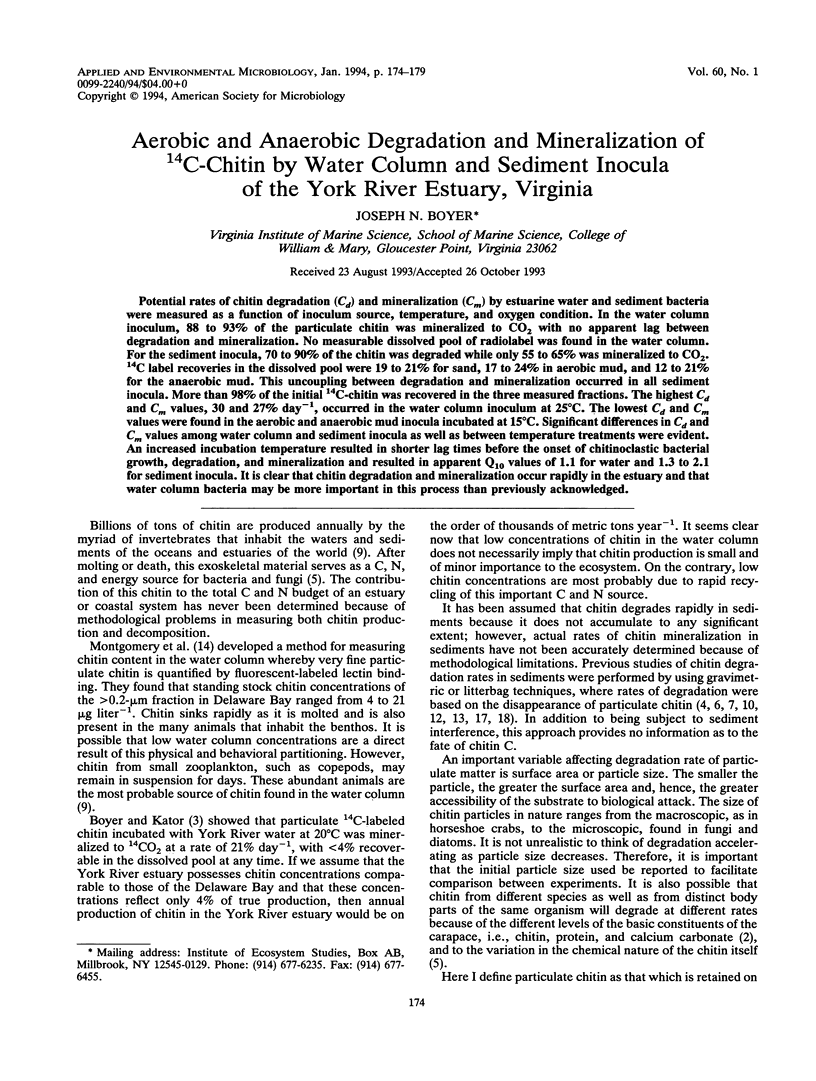
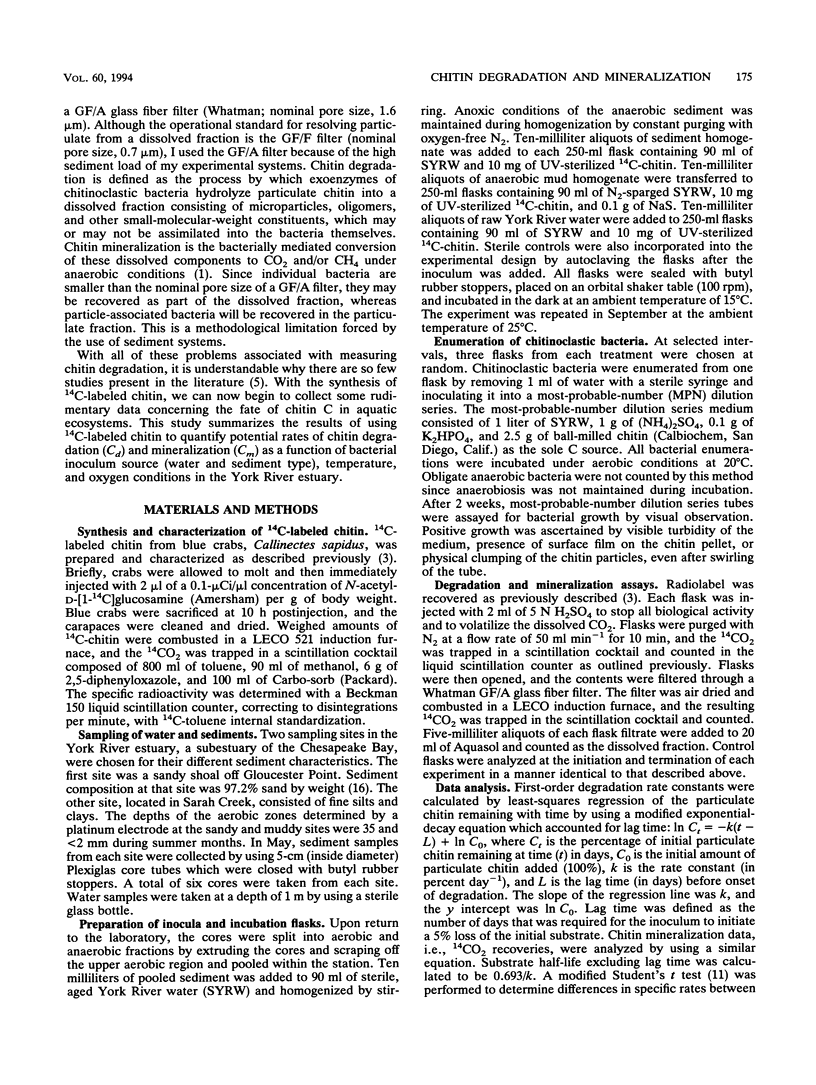
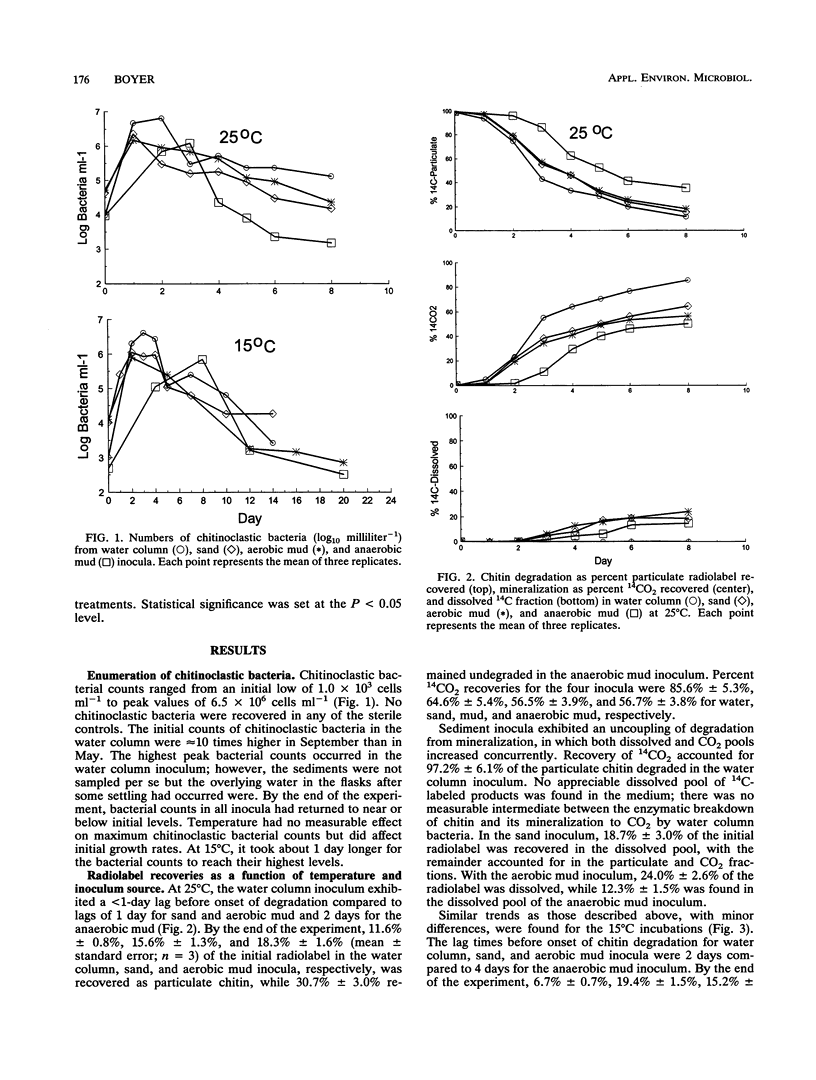
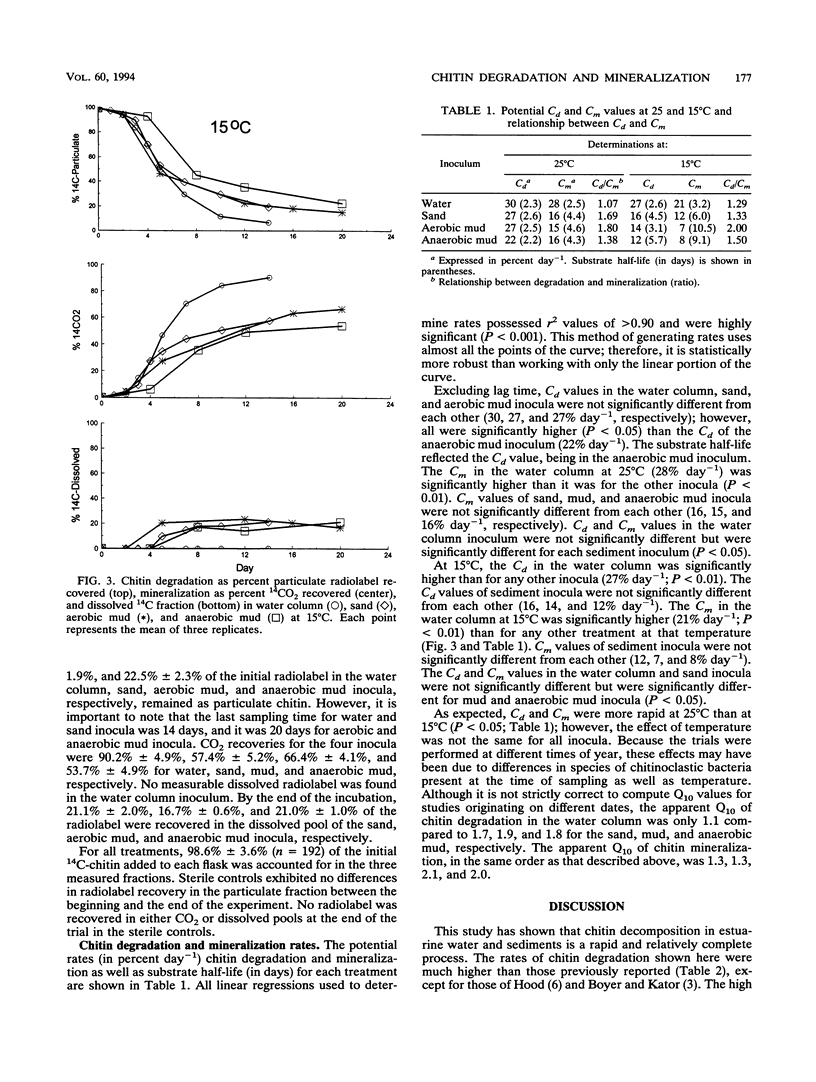
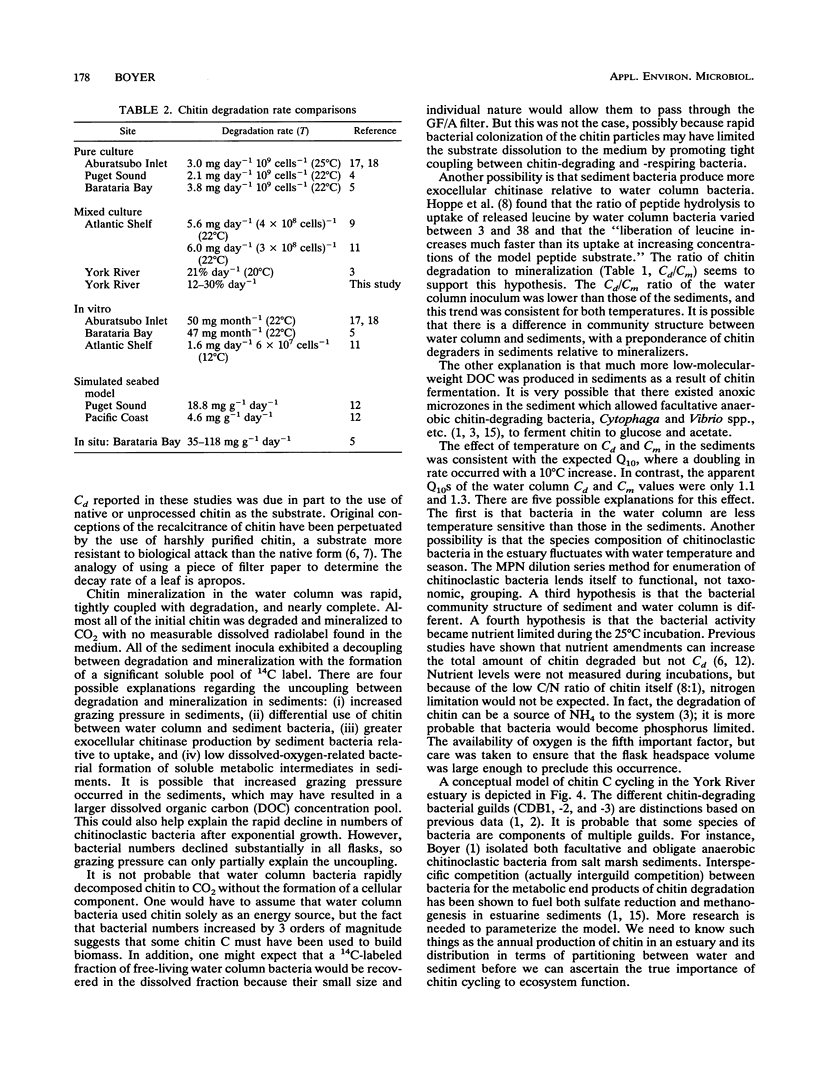
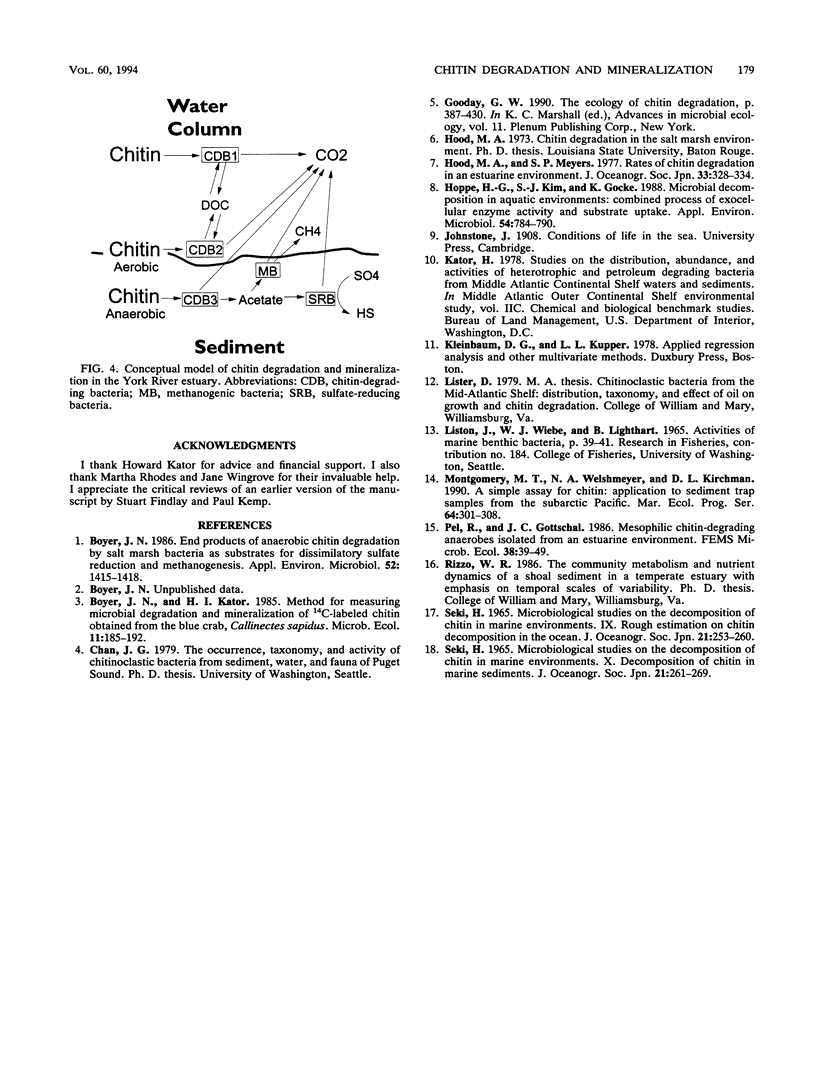
Selected References
These references are in PubMed. This may not be the complete list of references from this article.
- Boyer J. N. End products of anaerobic chitin degradation by salt marsh bacteria as substrates for dissimilatory sulfate reduction and methanogenesis. Appl Environ Microbiol. 1986 Dec;52(6):1415–1418. doi: 10.1128/aem.52.6.1415-1418.1986. [DOI] [PMC free article] [PubMed] [Google Scholar]
- Hoppe Hans-Georg, Kim Sang-Jin, Gocke Klaus. Microbial Decomposition in Aquatic Environments: Combined Process of Extracellular Enzyme Activity and Substrate Uptake. Appl Environ Microbiol. 1988 Mar;54(3):784–790. doi: 10.1128/aem.54.3.784-790.1988. [DOI] [PMC free article] [PubMed] [Google Scholar]


